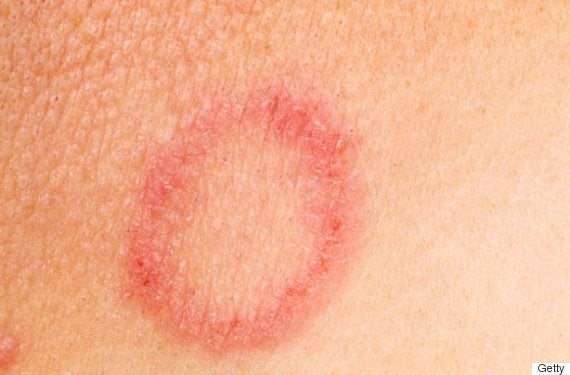Have you noticed strange pink or red rings or your child‘s body or scalp?
Well, they might have picked up a common and mild (though not very nicely named) condition called ringworm. Sorry.
What is it?
Let’s start with what it isn’t. It’s not a worm! Actually, ringworm is a fungal infection and it is caused by the same fungus that leads to athlete’s foot. It enters the body when there is some broken skin – if your child has even a tiny scratch, they could develop the condition.
The telltale signs of ringworm are pink or red rings, which will most likely occur on your child’s body or scalp – although they can also appear on the limbs and face.

Both babies and older children can become infected (as can adults, it’s very contagious). The fungus can be passed around through physical contact, but also on toys, towels, sheets, hairbrushes, clothes and hats. Pets can also carry and pass on the fungus and it can even be present in soil, so your child might have picked it up in the garden, or at the park. Swimming pools and other shared spaces are prime places to contract ringworm, too.
The pink rings themselves tend to look dry, and perhaps a little flaky. The area of skin inside the ring is usually smooth. You might find only one ring, but the infection can spread quickly, so there might be several areas affected.
Your child is likely to find the affected areas of skin quite itchy. As the rash develops, each ring will spread out and become larger. The smallest rings might be just a few millimetres in diameter, but they can end up several centimetres wide if left untreated.
Ringworm on the scalp can be harder to spot, because it can be confused with cradle cap, or dandruff (incidentally, children are more susceptible to scalp ringworm before puberty). Occasionally, the ringworm can become moist, or become filled with pus. Left alone, ringworm on the scalp might cause little bald spots.
Ringworm is fairly common, so don’t worry too much about it, just get on with the treatment. The condition is usually easily treated and there are some preventative measures you can take to help ensure your child doesn’t pick it up again.
What can I do?
If you suspect your child has ringworm on their body, but you can’t see any signs of it on their scalp, then your first stop should be your local pharmacy.
Ringworm can be cured with a mild anti-fungal treatment. Your pharmacist will probably recommend a cream containing either clotrimazole or miconazole, which they might suggest you use for a couple of weeks, twice a day.
Clean your child’s skin with just water and cotton wool, and pat dry. The cream should be smoothed on to each ring, and beyond it by half a centimetre or so. Once the rash has started to clear, you can continue to use the cream for a further two weeks to help prevent re-infection.
In some instances, it’s best to go to your GP. If your baby or child seems to have ringworm on their scalp, this can be harder to treat at home, so you should go to your doctor who might supply you with some anti-fungal shampoo and also some oral medicine.
If you have been using cream on your child’s body, and the rash has not gone after a fortnight, or if you think your child might have had an allergic response to the cream given to you at the pharmacy, you should also go to your doctor for further advice.
With treatment, ringworm will usually clear up within four weeks. However, occasionally it can lead to secondary infections. If you notice any other rashes on your child’s body, or if they seem to feel unwell, back to the doctor you go.
While your child has ringworm, you should keep their nails short to stop them from scratching at the rash and damaging the skin. Scratching can spread the infection.
If you have a dog or cat in the house, it would be wise to take them to the vet for treatment. It can be hard to see if they have ringworm, and if they do, they might re-infect your family.
For more information on treatment ringworms in babies, visit the NHS Choices website.